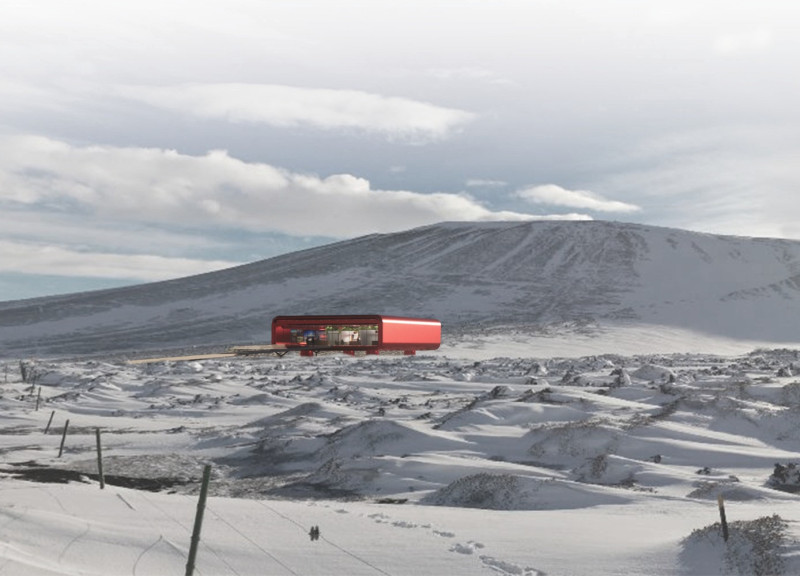5 key facts about this project
The Red Dot Pavilion is an architectural project situated near the Hverfjall volcano in Iceland. This facility operates as a coffee shop and observatory, designed to integrate with the surrounding volcanic landscape while providing a comfortable space for visitors. Its distinctive form and vibrant red color not only create a visual contrast within the rugged terrain but also serve to draw attention and invite interaction, distinguishing it from typical architectural designs found in similar environments.
The pavilion’s primary function revolves around enhancing visitor experience through the creation of communal and contemplative spaces. It combines two essential functions: a coffee shop that serves as a social hub and an observation point for appreciating the natural surroundings. The interior layout encourages movement and interaction among guests, promoting a sense of community while facilitating individual reflection on the sweeping views afforded by the large glass panels that form its façade.
Material selection in this project emphasizes sustainability and environmental harmony. The use of sustainable timber for structural elements, alongside precast concrete flooring and aluminum cladding, underlines a commitment to durability and aesthetic coherence. Internally, bamboo features in various applications, reflecting a push toward renewable resources. The design intricacies, such as the geothermal heating system, further reinforce the project’s dedication to energy efficiency and ecological responsibility.
The architectural design of the Red Dot Pavilion introduces several unique approaches that set it apart from other projects. Notably, its bold color choice contrasts sharply with the neutral tones of the volcanic landscape, creating a landmark effect that enhances its visibility. Furthermore, the roof design mitigates issues related to snow accumulation, ensuring functionality while maintaining aesthetic integrity. The circulation plan within the pavilion facilitates a seamless visitor experience, allowing for easy transitions between the coffee shop and observation areas.
The integration of natural elements into the design process is another noteworthy aspect. The architecture resonates with Iceland's dramatic settings, allowing visitors to engage with nature directly while providing essential amenities that cater to their needs. The pavilion's architectural sections effectively convey the merging of built and natural environments, emphasizing how thoughtful design can coexist with raw landscapes.
For a comprehensive understanding of the Red Dot Pavilion, including its architectural plans, sections, designs, and ideas, a deeper exploration of the project presentation is encouraged. This will provide additional insight into the design philosophies and operational functions that characterize this unique architectural endeavor.






















































